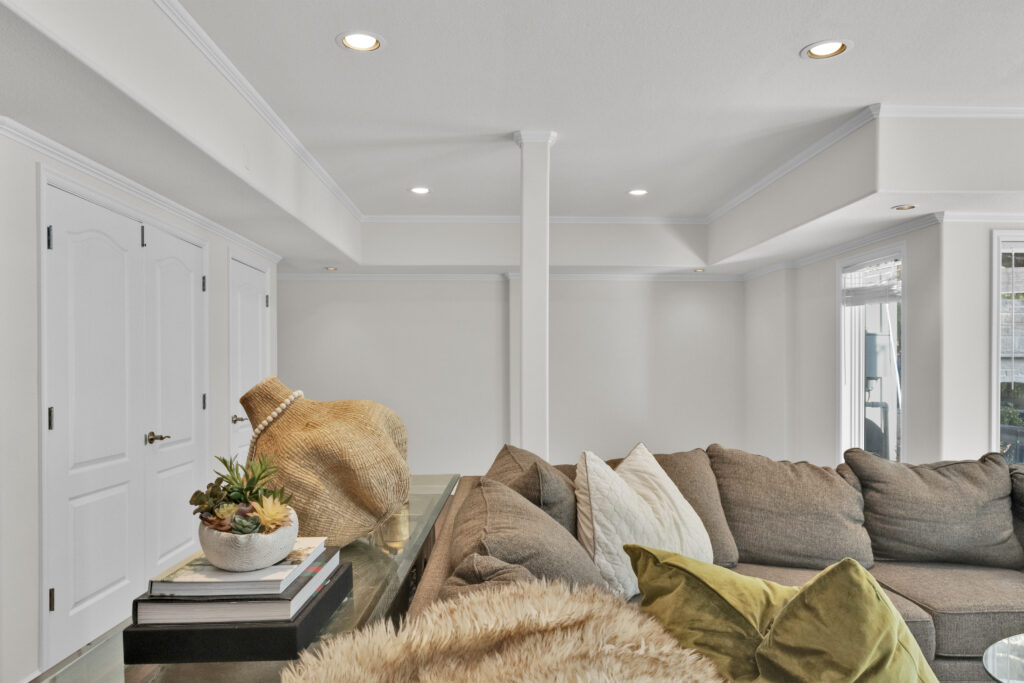So, you’ve picked out the perfect paint color for your walls, but now you’re left wondering: How many coats of paint for interior walls will give me that perfect finish? Many Tulsa, OK homeowners grapple with this question, and for good reason.
Too few coats can leave your walls looking patchy, while too many can make the surface feel thick and rubbery. The good news? There are a few simple guidelines to help you decide how many coats you really need, ensuring a smooth, professional-looking result without overdoing it. Let’s uncover the details and figure this out together!
Key Takeaways:
- This blog helps homeowners decide how many coats of paint for interior walls they need for a stunning look.
- Explores factors like wall condition, current color, primer use, and paint finish to ensure the right number of coats.
- Offers practical advice to avoid over-painting and get a lasting, beautiful result.

The Two-Coat Rule: Why It Works for Most Walls
Most painting professionals will tell you that two coats of paint are the way to go. This is because two coats provide a solid, even color that hides minor imperfections on the wall. It also gives the paint the opportunity to bond securely to the surface, which means it’ll last longer. But is two coats always the answer? Not necessarily. The number of coats can vary depending on what you’re starting with and the look you’re going for.
What Influences How Many Coats of Paint for Interior Walls You’ll Need?
Here’s the thing: there’s no one-size-fits-all answer when it comes to painting. To get the results you want, you need to consider several key factors. Let’s break down how many coats of paint for interior walls to help you plan your interior house painting project.
1. Current Wall Color: Going Light or Dark?
The color you’re painting over is a major factor. If your walls are already a light shade and you’re painting them with a similar light color, one or two coats should do the job. However, if you’re covering up a dark color, like a bold navy or deep red, you’re probably looking at two or even three coats to get full coverage. Homes often feature-rich, cozy hues that require careful planning when switching to a new color.
2. The Quality of Your Paint
Not all paints are created equal. High-quality paints are formulated to provide better coverage with fewer coats. Some even advertise “one-coat” coverage, but that doesn’t always mean you’ll get away with just one layer. Cheaper paints, on the other hand, often require extra coats to build up an even finish. Spending a bit more on premium paint can actually save you time and effort in the long run.
3. Wall Surface and Condition
The surface of your walls matters. Smooth, clean walls in good condition typically need fewer coats than walls with cracks, stains, or textured surfaces. If you’ve got imperfections or patches from repairs, consider using a primer before painting. This step will create a more even surface, allowing the paint to go on smoothly and reducing the number of coats needed.
4. Using Primer: When It Makes Sense
Primer is your best friend when changing wall colors, especially when going from dark to light. Applying a coat of primer first helps to cover the old color and create a uniform base for the paint. In most situations, one coat of primer followed by two coats of paint will give you that professional finish you’re after. Skipping this step can lead to more coats down the line, so it’s worth the effort.
5. Paint Finish: How Glossy Are You Going?
The finish of your paint plays a role, too. Matte and flat paints usually require fewer coats because they offer better coverage. Glossy finishes, like satin or semi-gloss, can highlight flaws on the wall surface, often requiring an extra coat to achieve an even appearance. In Bixby, OK homes, areas like kitchens and bathrooms might use semi-gloss for durability, but be prepared to add an extra coat for a polished look.
6. Desired Look: Rich Colors Need More Love
If you’re opting for a rich, bold color, plan on more coats. Deep shades like emerald green or navy blue need extra layers to reach their full vibrancy. In these cases, three coats might be necessary to get the depth and saturation you’re looking for. It may take a bit more time, but the end result will be a stunning, high-end look that truly transforms the space.
When One Coat Could Be Enough
How many coats of paint for interior walls? While not common, there are times when one coat might do the trick. If you’re refreshing walls with the same color and they’re in great shape, a single coat can serve as a quick update. Some high-quality paints also advertise one-coat coverage, but it’s still wise to have extra paint on hand in case the finish isn’t as even as you’d like.
Tackling Textured Walls
Textured walls are a different ballgame. If you have textured surfaces, plan for more paint. The texture creates peaks and valleys that require additional coats for proper coverage. In homes around Jenks, OK, textured walls are popular in certain rooms, so consider adding an extra coat to get the finish you want.
The Dangers of Over-Painting
More paint isn’t always better. Applying too many coats can lead to issues like sagging, peeling, or a sticky finish that never quite feels dry. To avoid this, stick with the recommended two coats and only add more if absolutely necessary. Always allow each coat to dry thoroughly before deciding if you need to add another.
Final Thoughts
So, how many coats of paint for interior walls do you actually need? Most of the time, two coats will do the job beautifully. However, the right number can vary depending on factors like the current wall color, paint quality, wall condition, and your desired outcome. A well-painted interior can truly make a house feel like a home. If you’re feeling unsure, consulting with a professional painting service like Impressions Painting can help you get that perfect finish without the hassle.
Call us at 918-842-7006 for a FREE estimate, and let’s start transforming your space!






